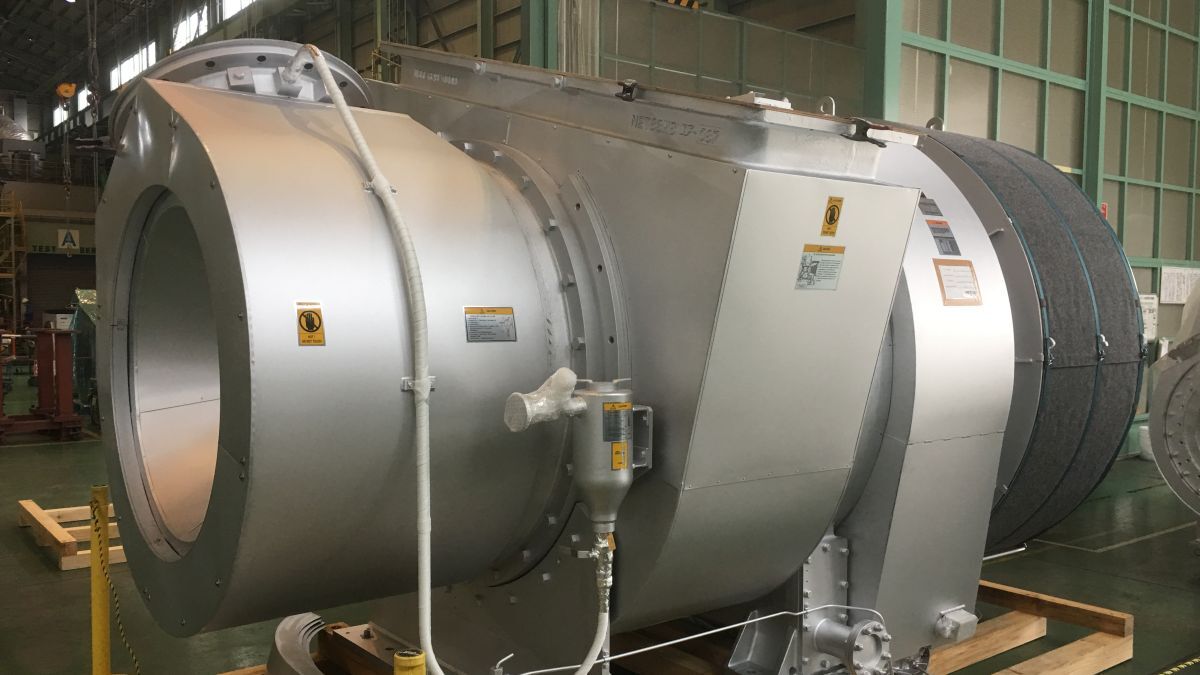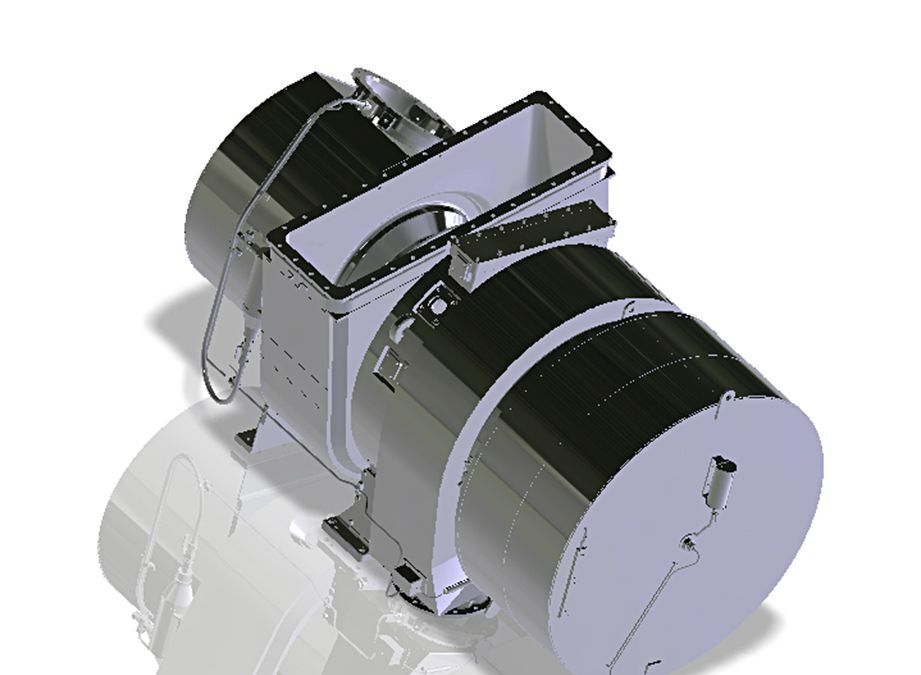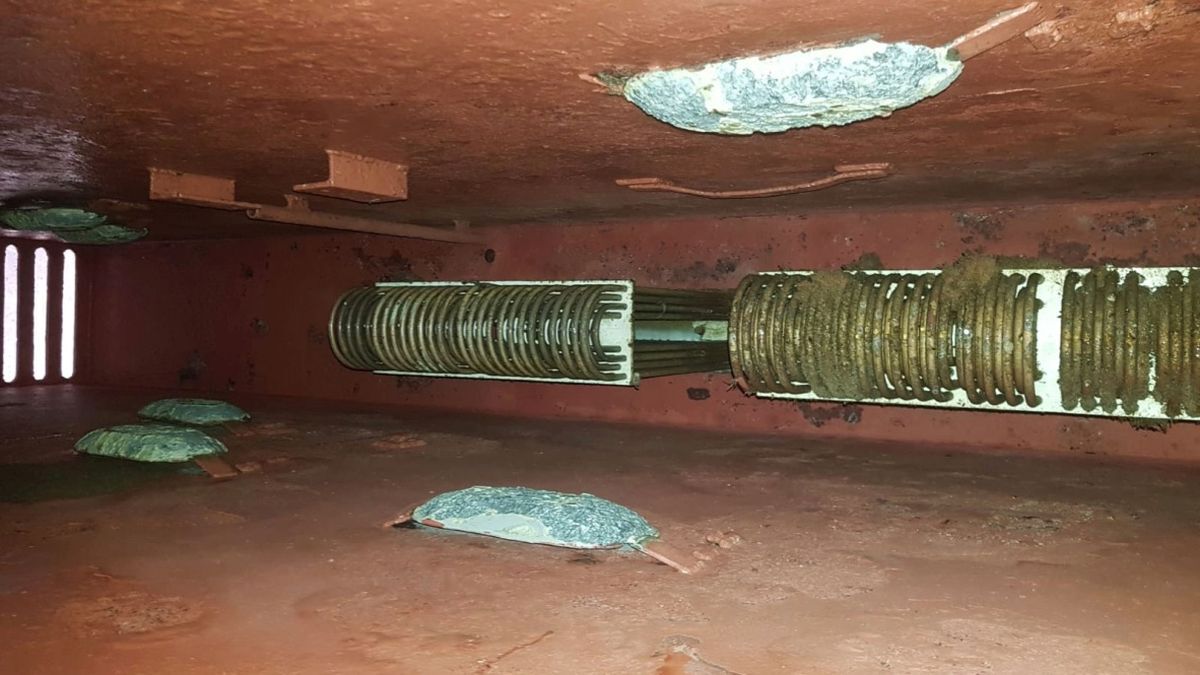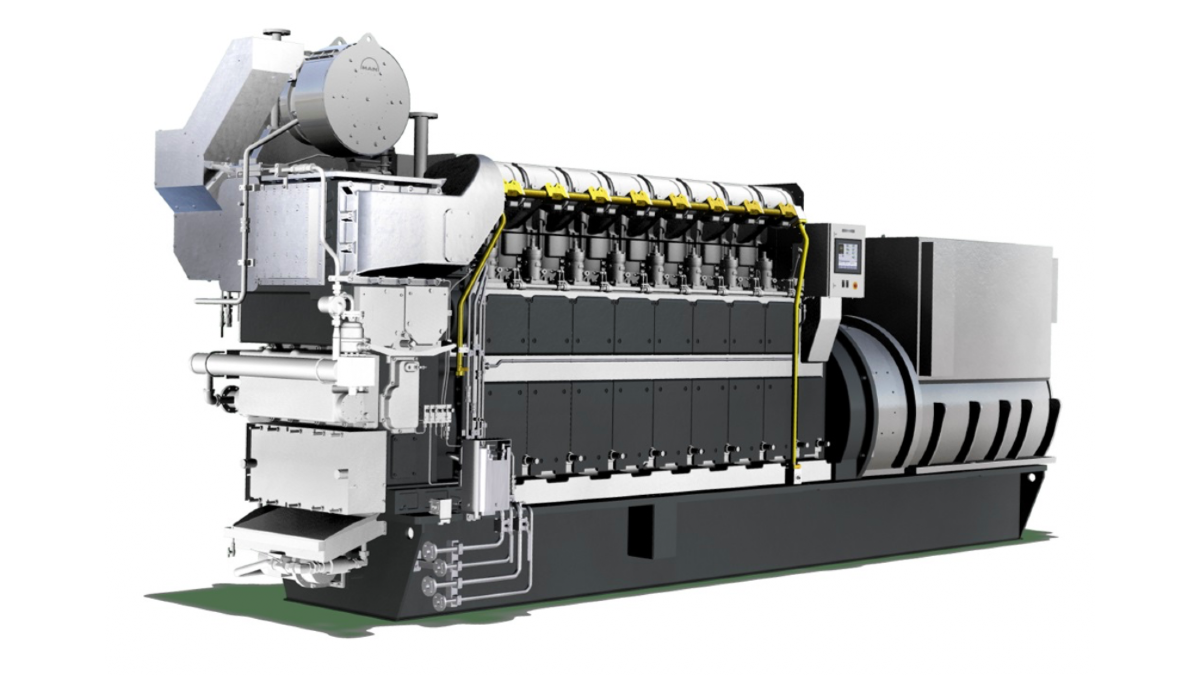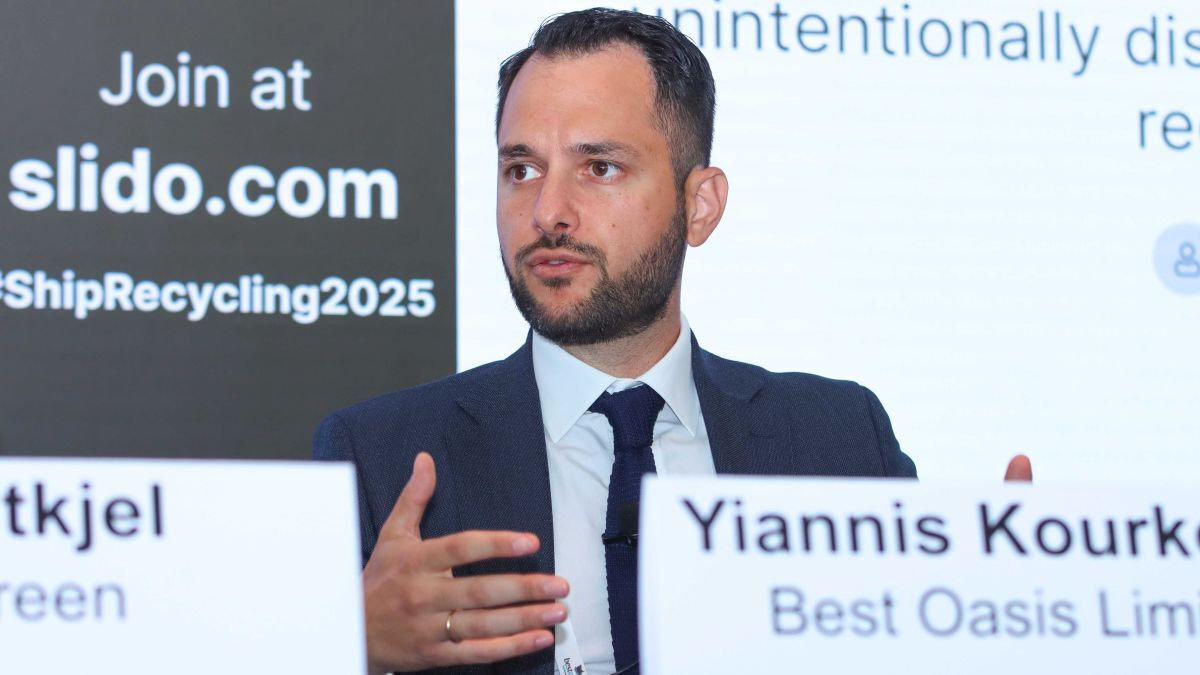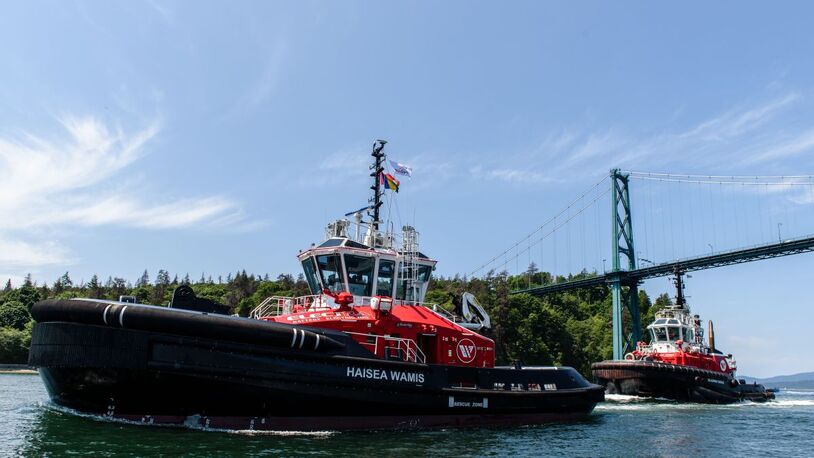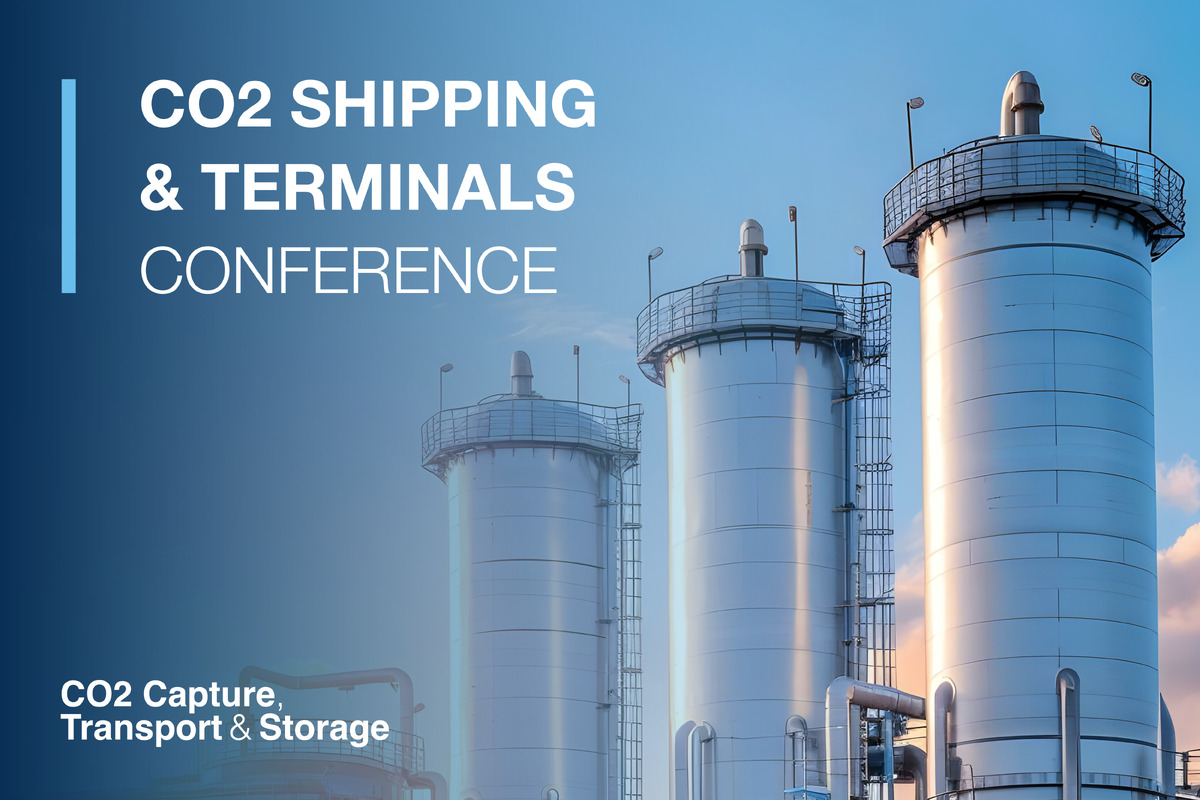Business Sectors
Contents
Register to read more articles.
MHI-MME’s new compact turbochargers get approval from MAN, WinGD
MET-MBII Series turbochargers have been approved for use for MAN Energy Solutions’ two-stroke diesels and WinGD’s X-DF engines
Developed to provide increased air flow to support improved combustion in a smaller footprint, Mitsubishi Heavy Industries, Marine Machinery & Equipment’s MET-MBII Series axial turbochargers have been approved for use by two of the world’s leading two-stroke engine designers.
In December 2020, MAN Energy Solutions SE approved the new turbochargers for use with its two-stroke Diesel-cycle, high-pressure engines.
In March 2021, Winterthur Gas & Diesel Ltd. (WinGD) granted approval to the MET-MBII Series turbochargers for use with all its Otto-cycle, two-stroke, low-pressure dual-fuel (X-DF) engines. Approval for installation with X-DF engines was based on favourable results obtained during performance tests carried out in mid-January, using a model 6X72DF test engine at IHI Power Systems Co, Ltd’s Aioi Plant in Japan. The MET-MBII Series models are listed in WinGD’s “General Technical Data for WinGD 2-Stroke Engines” turbocharger selection programme.
Previously, WinGD had approved the use of the new turbochargers in diesel engines.
As a result of the approvals, both MAN Energy Solutions and WinGD will share information on MET-MBII Series models through their turbocharger selection programmes.
As of the end of March, MHI-MME reported a total of 10 MET-MBII Series turbochargers had been delivered (eight MET33MBII units in Japan and two MET53MBII in China).
Developed in response to environmental regulations by the Japanese turbocharger manufacturer, the new compact series is expected to have lower capex and opex. MHI-MME says that strengths of the MET-MBII Series include reduced initial costs through downsizing, lower weight (enhanced mountability) and reduced maintenance costs.”
The MET-MBII series is a new type of axial turbocharger for achieving an increase in air-flow volume while maintaining the same standard of maintenance and reliability as MHI’s MET-MB turbocharger. A new compressor wheel with the optimum number of blades and blade angle distribution was developed for the MET-MBII series, aiming to increase capacity while maintaining high performance. The turbine-blade throat distribution was also optimised to develop a new turbine with higher exhaust gas pressure recovery performance in the gas outlet casing.
“MET-MBII Series strengths include the reduction of initial costs, lower weight, and reduced maintenance costs”
Meanwhile, the casing, a component excluding the silencer, is the same as that used in the conventional MET-MB series. MHI said the MET-MBII turbocharger provides 16% larger air flow volume compared to the older series.
China an important market
As the second-largest shipbuilder in the world (as of June 2021), China remains an important market for MHI-MME and the MET turbocharger series – backed up by recent reports from two leading engine builders, one in South Korea and one in China.
One is long-time licensee South Korea’s HSD Engine Co. In September 2020, MHI-MME celebrated the 10th anniversary of its licencing agreement with HSD Engine, under which it manufactures MET turbochargers. Based in Changwon, HSD Engine has been a marine engine builder since 1983, and its client base extends outside of South Korea, including delivering engines and turbochargers to leading Chinese shipyards.
In 2020, HSD Engine supplied an engine and a MET turbocharger, manufactured under the licence agreement, for installation into what was then the world’s largest container ship, with a capacity of 24,000 TEU.
Over the years, more than 400 MET turbochargers have been manufactured by HSD Engine, and its licence agreement has now been extended to incorporate the new MET- MBII Series.
MHI-MME says it will continue to work with HSD Engine to develop high energy efficiency and realise environmentally friendly solutions by manufacturing engines and turbochargers that correspond to new technologies and new fuels, including LNG.
MET turbochargers have been used in dual-fuel engines since 2014, and have found particular favour in the LNG sector, where such two-stroke propulsion applications have been on the rise. As of 2020, MHI-MME reported MET turbochargers were installed on about 40% of LNG carriers.
In November 2020, Hudong Heavy Machinery Co, Ltd and CSSC-MES Diesel Co, Ltd (HHM-CMD)
recognised MHI-MME with the Excellent Supplier Award for FY2019-2020 at its Supplier Convention 2020 in Shanghai.
As the largest builder of two-stroke engines in China, HHM-CMD has incorporated MET- MB/MBII turbochargers in its prime movers in recent years. One of those is the two-stroke, Otto-cycle, dual-fuel, LNG-fired 12X92DF engine manufactured by HHM-CMB, which was certified by Guinness World Records in January as the “Most powerful marine internal combustion engine (Otto-cycle) commercially available.”
MHI-MME believes that one of the factors in winning the award was that the MET83MB turbocharger, which was adopted for use in the 12X92DF engines installed on nine CMA CGM LNG-fuelled, 23,000-TEU container ships. With the capability of operating on LNG, the 2,140-tonne engine demonstrated a power of 63,840 kW at a speed of 80 rpm. LNG-fuelled ships significantly minimise air pollution caused by emissions of SOx, fine particulates and NOx, while offering a substantial reduction in greenhouse gas (GHG) emissions. When compared with operating on heavy fuel oil (HFO), LNG can reduce CO2 emissions by 25%, cut NOx by 85%, while virtually eliminating SOx and particulate emissions. Like other engines in the X-DF range it is ready for use, with no modifications required, once carbon-neutral fuels – including methane produced from biomass or renewable electricity – become available.
The French box ship giant took delivery of its ninth 23,000-TEU container vessel, CMA CGM Sorbonne, in July.
Damage to hot parts
MHI-MME reports that there have been cases of damage to an axial MET turbocharger’s hot parts (ie turbine blade/nozzle ring) from foreign material flying in from the engine side. To avoid such unforeseen circumstances, MHI-MME recommends an advance survey of hot parts around two months prior to a ship entering dry-dock. The survey can be carried out by simply removing the gas inlet casing and can be completed in about three hours while the ship is in harbour. There is no need to replace consumable parts.
If parts damage is discovered, replacements can be ordered in advance. This will make it possible to complete the replacement within the docking period, enabling safe operation afterward.
Related to this Story
CMB.Tech 'positive' on IMO's new framework, hails ammonia as 'the way forward'
Events
Reefer container market outlook: Trade disruption, demand shifts & the role of technology
Asia Maritime & Offshore Webinar Week 2025
Marine Lubricants Webinar Week 2025
CO2 Shipping & Terminals Conference 2025
© 2024 Riviera Maritime Media Ltd.


